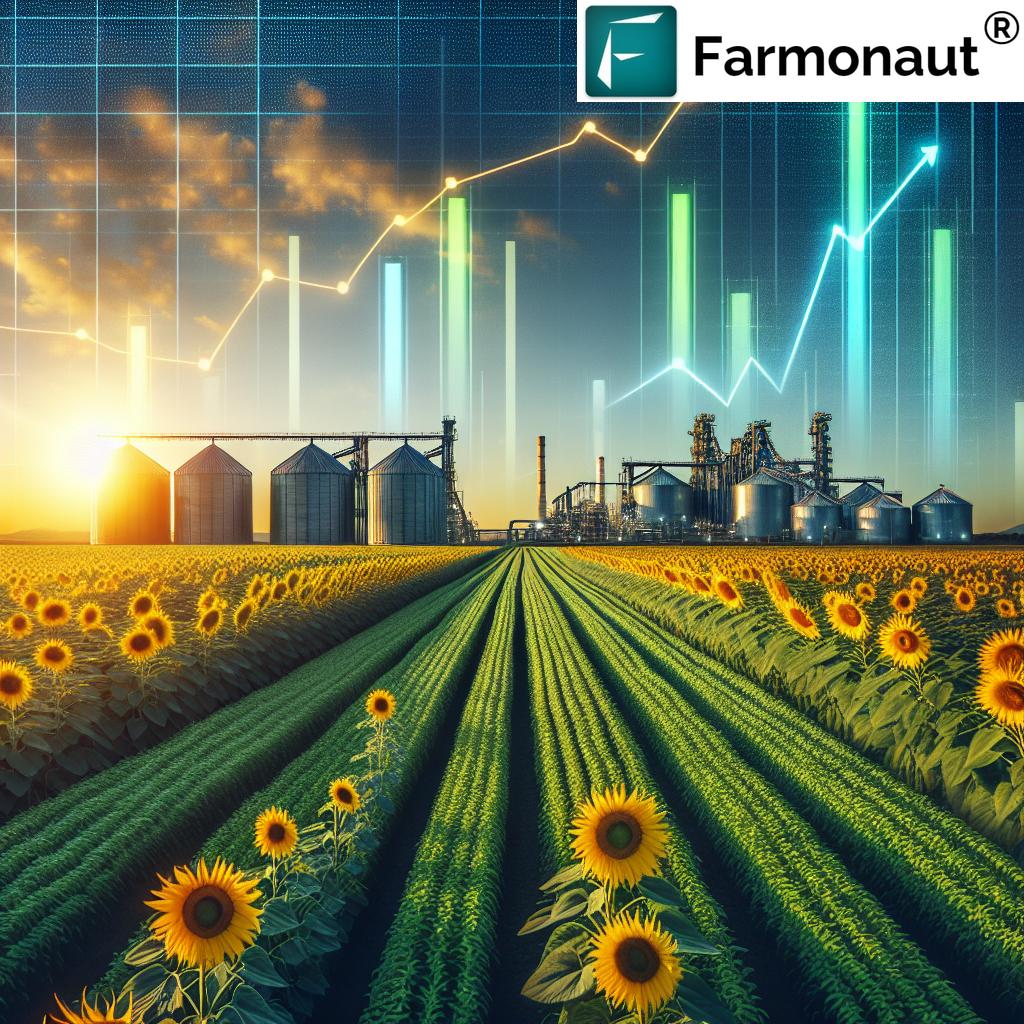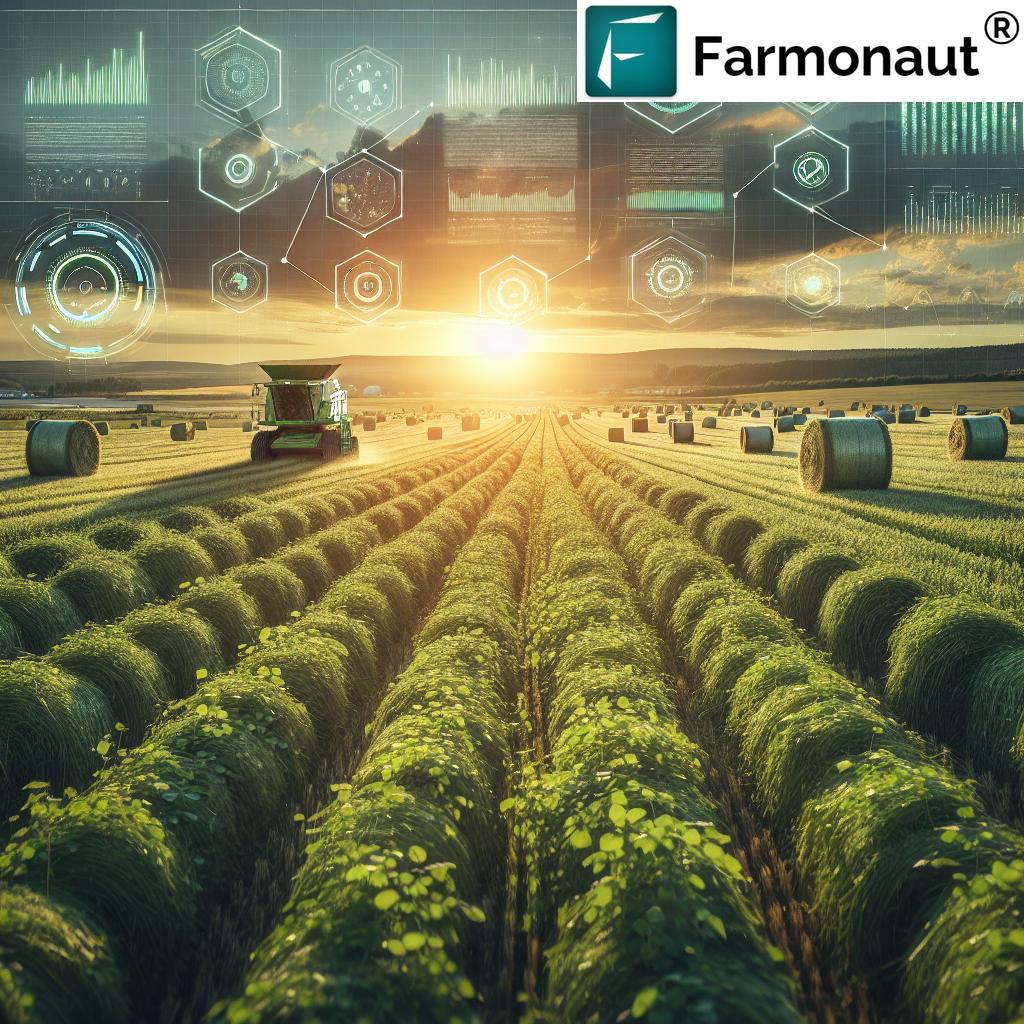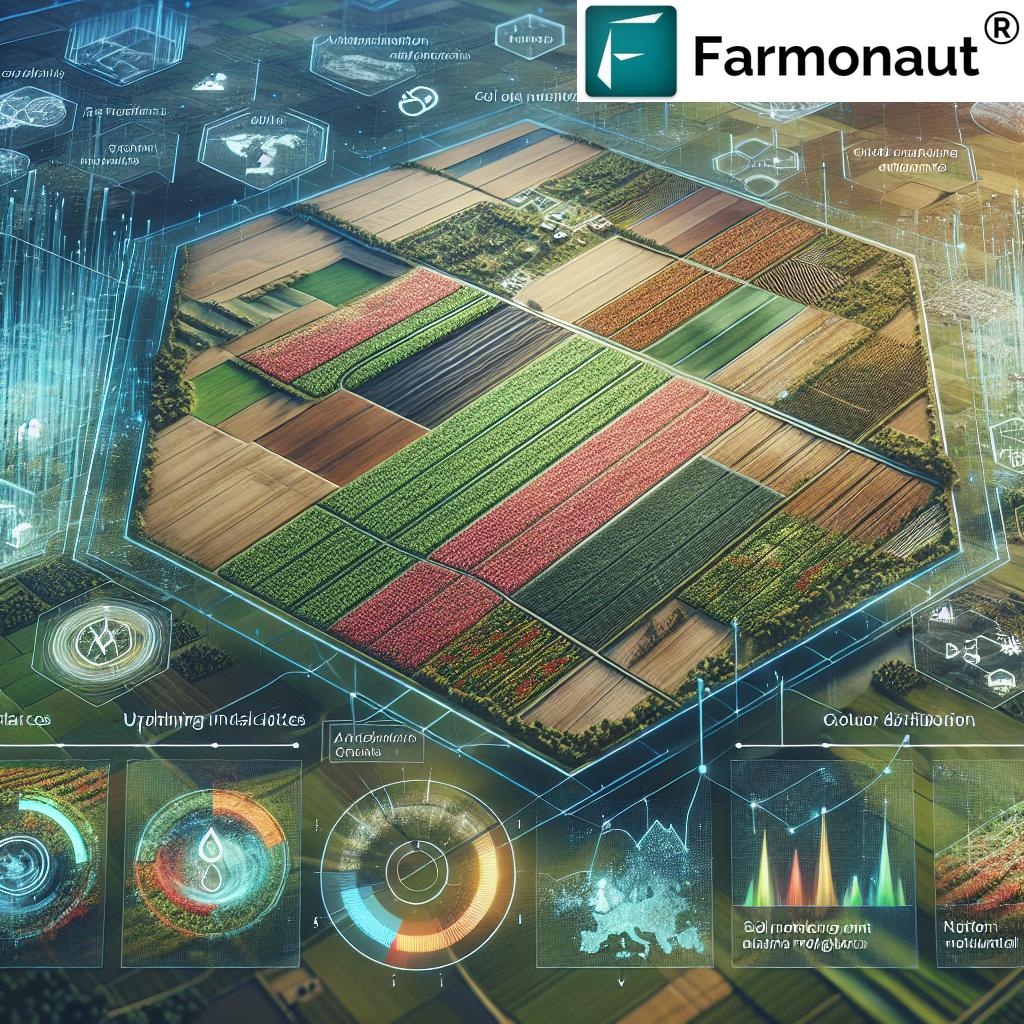Soil Tillage vs No Tillage: Spring Farm Trends 2026
Introduction
As the seasons turn toward spring 2026, soil tillage remains at the forefront of agricultural transformation. Historically, tillage—the mechanical manipulation of soil to prepare seedbeds and manage weeds—was viewed as indispensable for maximizing farm productivity. However, with mounting environmental concerns, changing climatic conditions, resource scarcity, and the rise of precision and sustainable practices, the debate intensifies between conventional tillage approaches and innovative no-tillage systems.
In this comprehensive guide, we delve deep into spring tillage and no tillage farm trends for 2025 and beyond. We’ll cover the importance and impacts of various soil tillaging methods, the evolution of farming practices, cutting-edge technological innovations, and strategic advice for farmers, agronomists, and policymakers striving for optimal management and sustainability. Let’s unravel how spring tillage and its alternatives are shaping the future of agriculture.
Understanding Soil Tillage & Its Importance in Modern Agriculture
Tillage involves breaking and turning soil to prepare seedbeds, incorporate residues, and control weeds. It’s also critical for improving soil aeration, moisture retention, and ultimately establishing a robust structure for crops.
The traditional farm tillage approach—typically plowing followed by harrowing—creates a fine seedbed for planting, especially vital in temperate regions where spring tillage is conducted after winter covers or fallow periods. At its core, tillage remains a cornerstone of agriculture, influencing not only crop yields but also:
- Soil structure and organic matter dynamics
- Moisture retention and infiltration
- Weed and pest management
- Nutrient cycling and seedling establishment
- Environmental health and resource preservation
Conventional tillage is widely practiced due to its reliability and efficacy, especially for grain and vegetable crops. However, the environmental cost—such as increased soil erosion, compaction, loss of organic matter, and greenhouse gas emissions—has propelled the evolution of new tillage approaches.
What Does Soil Tillage Involve?
At its core, tillage practices revolve around:
- Mechanical manipulation—breaking and turning the soil using plows, discs, or harrows
- Weed control—disrupting weed growth and incorporating residues
- Seedbed preparation—creating optimal conditions for planting, ensuring even emergence, and improved moisture accessibility
- Residue management—mixing crop residues to recycle nutrients
Spring Tillage: A Seasonal Perspective
Performed in early planting seasons, spring tillage readies soil after winter (or fallow periods), allows for fine-tuned control of soil moisture and weed populations, and supports seedbeds for new crop cycles. This process is especially crucial in regions with short growing seasons where early establishment translates directly to higher productivity.
- Timing: Conducted when soil is neither too wet nor too dry to avoid compaction or ineffective tilling
- Depth: Managed to support optimal seed placement and root growth
- Precision: Modern equipment uses soil sensors and GPS for accuracy
Conventional Farm Tillage vs No-Tillage Systems: Trends and Techniques
As we advance into 2026, farming trends are rapidly shifting with the adoption of conservation tillage and no-tillage systems. These practices aim to balance agronomic and ecological objectives by reducing excessive soil manipulation.
The Core Differences Explained
-
Conventional Tillage:
- Involves mechanic agitation with plowing, harrowing, and deep soil turnover
- Promotes residue burial, improved initial weed control, and fast seedbed establishment
- However, it can disrupt organic matter, increase erosion risk, and accelerate carbon loss
-
No-Tillage (Zero Tillage):
- Seeds are planted directly into undisturbed soil (minimal mechanical agitation)
- Cover crops and residues remain on the surface, protecting the soil structure
- Greatly reduces erosion, enhances soil carbon sequestration, and improves water infiltration and retention
- Supports soil microbial health and biodiversity
The emergence of no-tillage gains prominence as climate risks and resource scarcity rise. Yet, both strategies—if managed prudently—have their place in farm management.
-
Advantages of Conventional Tillage:
- Reliable weed and residue management for intensive farming
- Prepares fine seedbeds for sensitive crops
- Reduces short-term pest and disease cycles
-
Advantages of No-Tillage:
- Enhanced organic carbon sequestration
- Lower labor and fuel costs
- Reduced soil compaction and improved biological activity
- Supports climate-smart farming and greater long-term sustainability
Challenges to Consider
- No-tillage: May require increased herbicide use for weed control and precise residue management practices. Performance varies by soil type and crop rotation.
- Conventional tillage: Risks exaggerated erosion, organic matter loss, and higher greenhouse emissions with repeated or careless application.
Farmers, Agronomists, and Policymakers: What’s the Optimum Approach in 2026?
The future doesn’t call for a “one size fits all” solution. Instead, it’s about deploying tillage or no-tillage as part of a larger integrated soil management system—balancing soil health, productivity, and environmental priorities depending on crop, soil, and region.
Spring Tillage Trends, Techniques, and Practices for 2026
Spring 2026 is set to witness a landscape defined by precision, minimal tillage, and sustainability. Let’s break down the latest trends and best practices in spring tillage:
Key Trends Defining Spring Tillage 2026
- Precision Agriculture Integration: Modern equipment leverages real-time satellite soil moisture and AI-driven advisory tools. Sensors guide depth and minimize unnecessary soil disturbance.
Try Farmonaut’s Satellite Crop Monitoring: Large Scale Farm Management Platform enables comprehensive, data-driven field monitoring for optimal tillage timing, reducing input waste and maximizing yields. - Minimal & Strip Tillage: Only a fraction of the field is tilled where planting occurs; the rest is left undisturbed, enhancing soil structure and moisture conservation.
- Residue Retention: Keeping cover crop residues atop the soil aids organic matter buildup and erosion control.
- Region- and Crop-Specific Customization: Strategies are tailored for grain vs. vegetable crops, clay vs. sandy soils, arid vs. humid regions—all based on real-time sensing, predictive forecasting, and AI analysis.
- Eco-Friendly Machinery: Equipment is designed for fuel efficiency and minimal greenhouse gas emissions per acre.
- Resource-Efficient Management: Satellite data and AI advise on when and where to till, unlocking better resource management and sustainability.
Why Is Minimal Tillage Gaining Ground?
- Reduces soil erosion risk and carbon loss
- Improves soil biological activity, strengthening structure and fertility
- Lowers operational costs (fuel, labor, repair)
- Enhances water retention in increasingly erratic climatic conditions
Example Spring Tillage Approaches by Region
- Temperate zones: Early, shallow tillage to break up compacted layers after winter and prepare for spring planting of cereals and legumes.
- Dryland & Arid regions: Minimal disturbance is crucial to preserve soil moisture; residue retention and no-till dominate.
- Regions with heavy clay: Some deep tillage is periodically required to enhance aeration and prevent waterlogging—but always informed by real-time soil data.
Such region-specific, technology-enabled decision-making is rapidly becoming best practice—empowered by the latest in precision agriculture monitoring and AI insights.
Balancing Soil Health and Crop Productivity: The Key to Conservation and Maximum Yields
Sustainable soil management is not just about choosing between tillage or no-till—it’s about using each tool wisely. Here are factors to balance in 2026:
Soil Health: What to Watch For
- Organic matter: Retained more effectively under no-till or minimal till systems
- Erosion risks: Reduced dramatically with less soil disturbance
- Compaction: Managed through controlled traffic, shallow tillage, and real-time analysis
- Soil structure and microbial health: Maintained by integrating residue cover, crop rotation, and minimal tillage
Productivity: How to Optimize for Different Crops
-
Grain crops (wheat, maize, barley):
- No-till yields are now competitive or superior in many regions, especially when moisture is limiting
- Residue retention protects soil surface, supporting microenvironment stability
-
Vegetable crops:
- Often require fine seedbed and controlled environments. Hybrid systems with strategic, precision tillage are optimal
Integrated approaches—rotating tillage systems, employing cover crops, using real-time satellite monitoring—help farmers maximize yield potential without sacrificing long-term fertility.
Track & Reduce Your Farm’s Carbon Footprint: Farmonaut’s advanced satellite monitoring empowers you to assess and manage greenhouse gas emissions and carbon sequestration, helping meet global sustainability targets while protecting your soil health.
How Cover Cropping Complements Tillage Strategies
- Suppresses weeds and improves ground cover in both conventional and no-till systems
- Stimulates organic matter buildup and nitrogen availability
- Reduces risk of soil erosion during off-seasons or heavy rainfall periods
- Enhances pest and disease suppression naturally
Boosting Crop Loan and Insurance Access with Satellite Evidence
Farmonaut’s Satellite-Based Verification supports fair, transparent crop loan and insurance evaluations. Leveraging up-to-date field metrics, we help reduce fraud and deliver greater financial inclusion for farmers practicing sustainable tillage or no-tillage systems.
Technological Innovations in Precision Tillage: 2025, 2026, and Beyond
Innovation is the cornerstone of both soil tillage and no-tillage success in the next decade. Here’s what’s rewriting the future of spring farming:
Precision Technology Transforming Soil Management
- Smart Tillage Equipment: AI-powered, GPS-guided tractors and tillers optimize tillage depth, speed, and pattern based on live soil sensor data—targeting only what’s needed and where.
- Satellite and Remote Sensing: Real-time soil moisture, compaction, and nutrient tracking inform not only when and how deep to till, but if tillage is needed at all.
- Autonomous Systems: Machinery capable of adjusting operations on-the-go for minimal disturbance and energy use.
-
Blockchains for Traceability: Securely track field operations, crop origins, and sustainable practices—a growing requirement for supply chains and regulatory bodies in 2026.
Farmonaut’s Blockchain-Based Product Traceability guarantees transparency for those adopting conservation tillage or no-tillage methods. - Integrated Environmental Monitoring: Automated carbon footprint and emissions tracking—enabling in-field sustainability audits for every spring tillage or planting cycle.
-
Fleet and Resource Optimization: Satellite-powered fleet tracking cuts fuel/labor costs, ensures precise equipment allocation, and limits soil compaction via route optimization.
Discover Satellite Fleet Management Tools for Agriculture
APIs and Developer Integrations
Expand your agri-tech stack or integrate satellite-driven insights with Farmonaut’s API. For full technical documentation, visit our API Developer Docs. Build your own precision farming workflows with real-time data!
Tillage vs No-Tillage: Key Metrics for Spring 2026
| Performance Metric | Tillage | No-Tillage |
|---|---|---|
| Soil Organic Matter (%) | 1.6–2.1 | 2.1–2.8 |
| Water Retention (mm) | 140–180 | 180–240 |
| Input Cost ($/acre) | $95–$125 | $65–$85 |
| Spring Yield Potential (bushels/acre) | 45–65 | 44–68 |
| CO2 Emissions Reduction (%) | 0–10 | 15–33 |
| Precision Tech Adoption Rate (%) | 62 | 74 |
Farmonaut: Elevating Tillage & Sustainability with Satellite Intelligence
In the ever-evolving world of agriculture, satellite-driven insights present game-changing opportunities for soil management and optimal spring tillage. At Farmonaut, we leverage multispectral satellite imagery with artificial intelligence and blockchain, making precision agriculture more accessible, data-driven, and sustainable.
- Real-Time Crop & Soil Monitoring:
Our platform provides live NDVI, soil moisture, and compaction maps—empowering farmers to time tillage or no-tillage interventions precisely, improving both productivity and environmental outcomes. - Jeevn AI Advisory System:
Our proprietary AI analyzes remote-sensing data to deliver tailored crop strategies and weather risk forecasts, supporting the best tillage practices each spring. - Blockchain Traceability for Sustainability:
Integrate transparent product traceability in your operations and prove adherence to conservation and climate-smart practices throughout supply chains—a must for 2026. - Resource & Logistics Optimization:
Use our satellite-powered fleet management to track equipment, minimize soil compaction, and lower operational emissions for all spring tillage and planting processes. - Environmental Impact Management:
Track your farm’s carbon footprint with Farmonaut’s accessible, actionable analytics. Check out our carbon foot-printing solution for full details. - Scalable, Affordable Access:
Regardless of your operation’s size, our web and mobile apps bring cutting-edge tillage monitoring and advisory to every device. Start with Farmonaut’s Web System now.
By integrating real-time data, advanced analytics, and sustainability tools, we help farmers, businesses, and governments thrive amidst changing climate and resource challenges—no matter your soil tillage choice.
Frequently Asked Questions (FAQ)
Q1: What is the main difference between conventional tillage and no-tillage?
Conventional tillage involves plowing, harrowing, and breaking soil before each planting, whereas no-tillage plants seeds directly into undisturbed soil, leaving residue on the surface. No-tillage reduces erosion, supports organic matter, and is more climate-smart—while conventional tillage is useful for heavy weed management and crops needing fine seedbeds.
Q2: Can no-tillage replace all types of tillage for every farm?
No. While no-tillage has strong environmental and cost benefits, some soil types (e.g., heavy clay) or specific crop rotations require strategic tillage to manage compaction and aeration. Integrated approaches often work best.
Q3: Is spring tillage always necessary?
Not always. In many regions, spring tillage is used to break up crusted soils after winter. However, modern minimal and no-till systems—supported by cover crops and precision monitoring—may require little to no disturbance.
Q4: How does technology improve tillage practices?
Satellite monitoring, AI, and precision equipment optimize tillage timing, depth, and coverage, minimizing unnecessary soil manipulation, saving fuel, and reducing emissions.
Q5: What role do cover crops play in tillage systems?
Cover crops protect soil during off-seasons, improve organic matter, suppress weeds, and mitigate erosion—making them a valuable companion to both tillage and no-tillage systems.
Q6: Does Farmonaut provide direct tillage machinery?
No, we do not sell or manufacture farm machinery. We provide satellite-based decision support, monitoring, resource management, API integrations, and blockchain traceability tools to support informed, sustainable field operations across all tillage practices.
Q7: Where can I access Farmonaut’s platform or apps?
Visit our Web App, download from the Google Play Store, or the Apple App Store.
Conclusion: Advancing Towards a Sustainable Spring Tillage Future
As we move into 2026 and beyond, the conversation around soil tillage vs no-tillage is evolving rapidly. Conventional tillage remains a vital tool for many systems, but no-tillage and minimal spring tillage—empowered by precision technology—are at the center of sustainable farm trends.
- The importance of tillage lies in optimizing soil health, moisture retention, and crop yields while addressing environmental and climatic pressures.
- Adoption of innovative farming practices, such as targeted spring tillage, conservation agriculture, cover cropping, and real-time monitoring through satellite technology, significantly improves resource use and sustainability.
- At Farmonaut, we stand committed to empowering every user—whether practicing tillage or no-tillage—with affordable, actionable insights, ensuring a balance between productivity and preservation for a resilient agricultural future.
Ready to optimize your spring tillage decisions? Try Farmonaut’s platform today and step confidently into the future of precision, sustainable agriculture.












